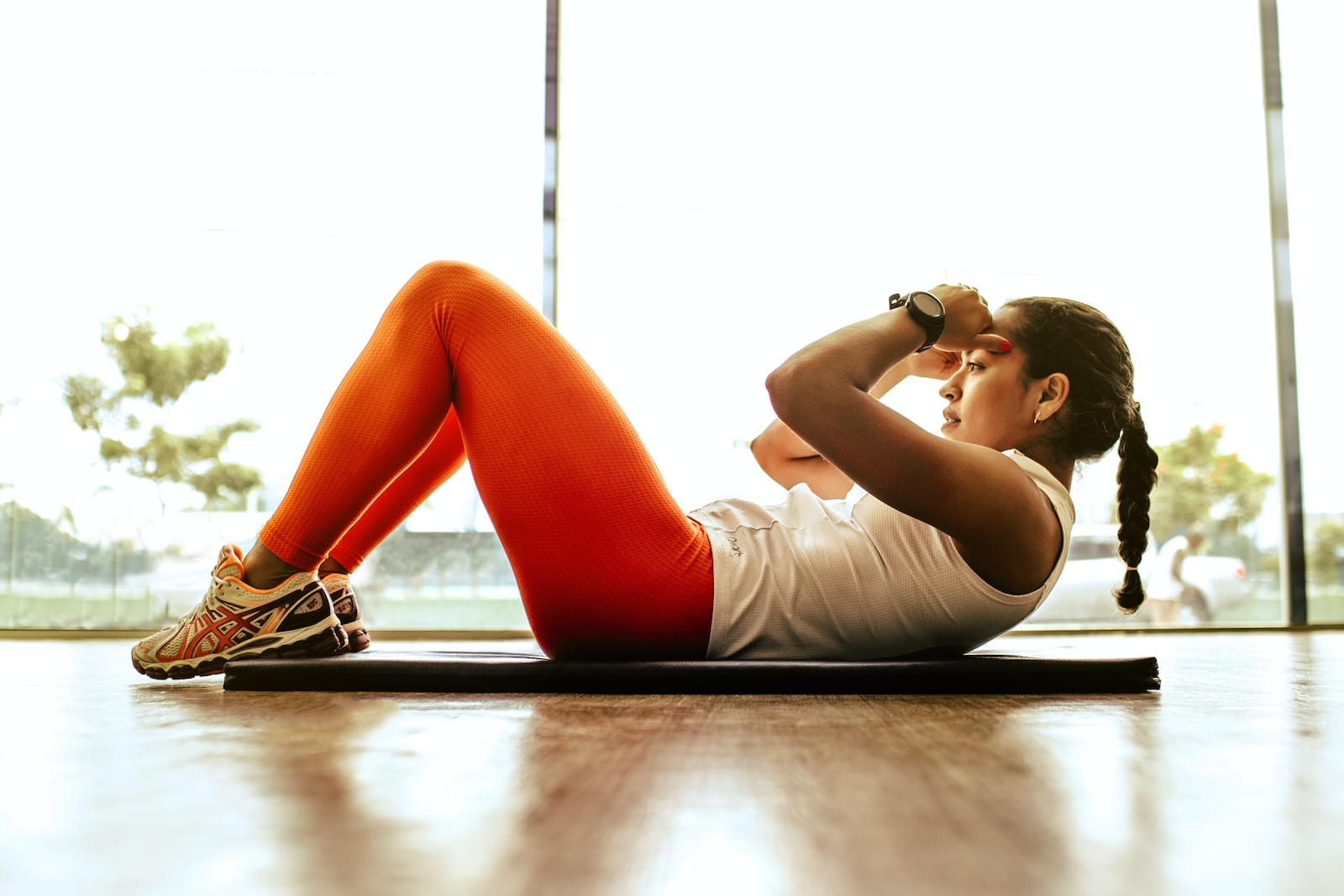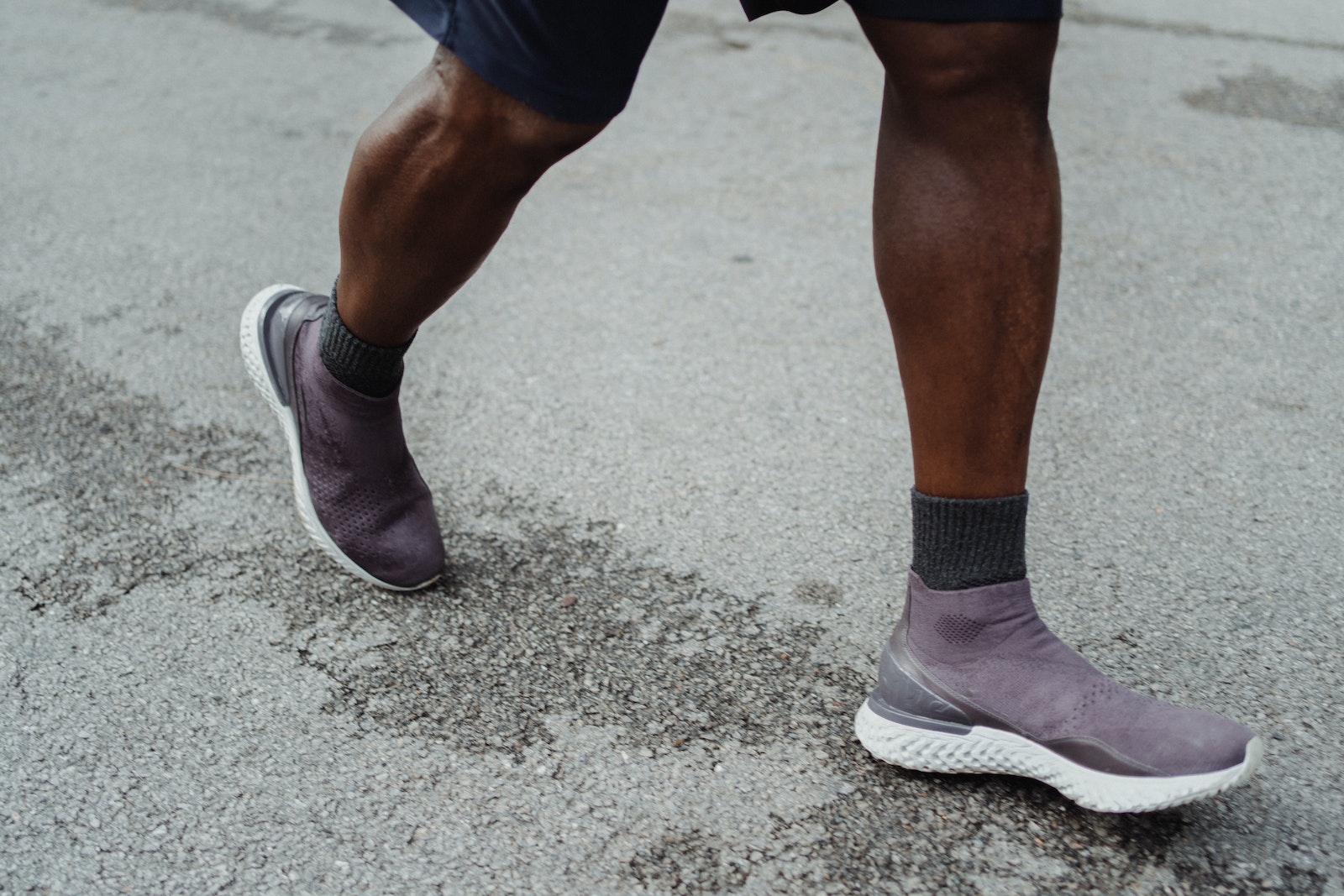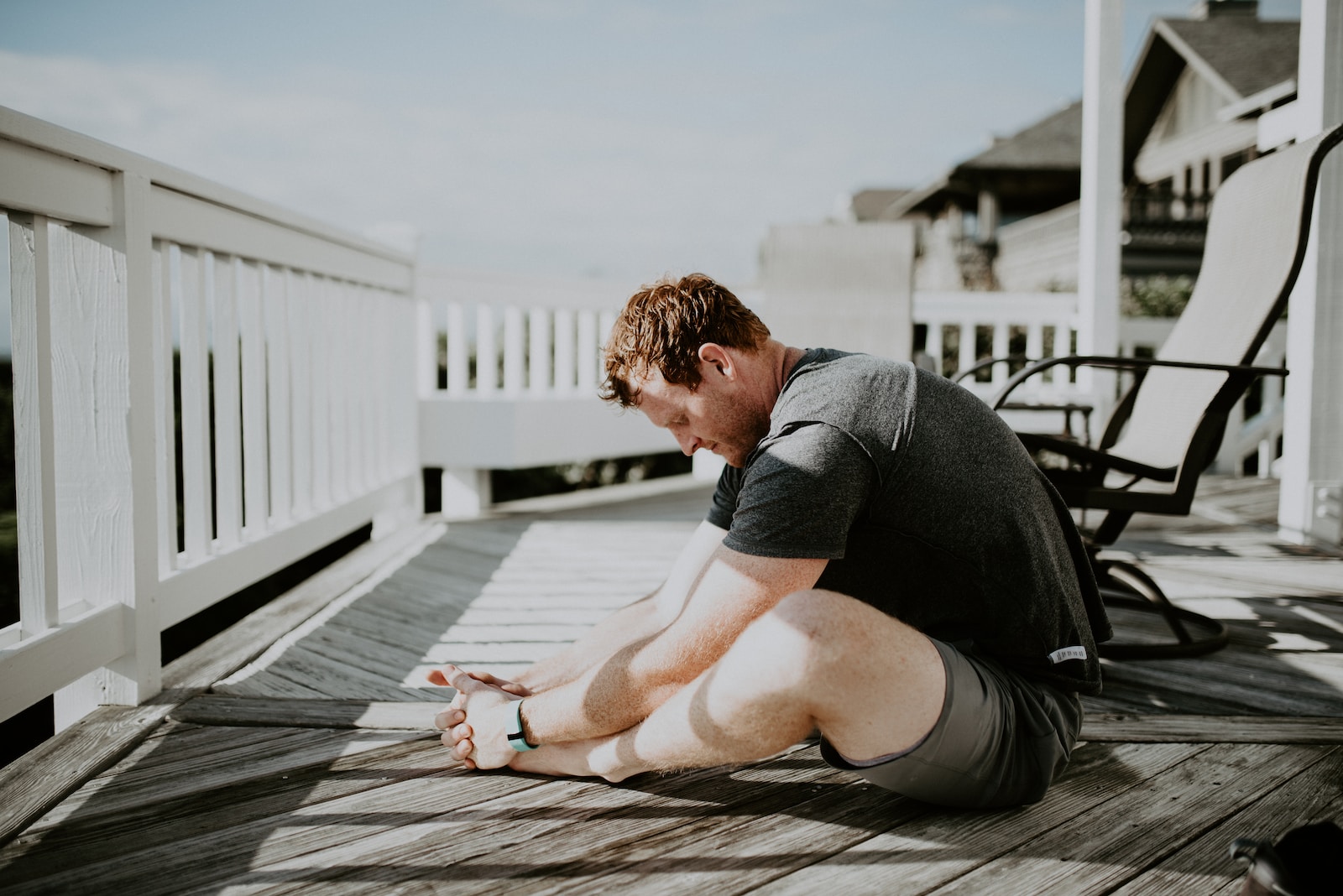Starting a fitness journey can be daunting, especially for beginners. However, incorporating simple exercises into your routine can reduce the intimidation factor and help you build a foundation for more intense workouts in the future. Plus, finding enjoyable workouts that you look forward to can help you stay motivated.
Key Takeaways:
- Starting with easy exercises is beneficial for beginners.
- Simple exercises can help improve cardiovascular health, build strength, and enhance flexibility.
- Walking, bodyweight exercises, yoga, swimming, cycling, strength training, and stretching are all great options for beginners.
- Setting realistic goals, finding a workout buddy, and scheduling regular exercise sessions can help you stay on track.
Why Exercise is Important for Beginners
Starting a fitness journey can be daunting, especially for beginners. However, incorporating regular exercise into one’s routine is crucial for overall health and well-being. Engaging in beginner exercises and workouts can be a great way to ease into a fitness routine without feeling overwhelmed.
Regular physical activity can help to reduce the risk of chronic diseases, such as heart disease and type 2 diabetes. Additionally, exercise can help to increase energy levels, boost mood, and improve mental health.
Starting with simple exercises can also help to build a foundation for more intense workouts as one’s fitness level improves. By gradually increasing the intensity and duration of workouts, beginners can work towards achieving their fitness goals without risking injury or burnout.
Incorporating beginner exercises and workouts can be an enjoyable way to maintain physical fitness, reduce stress, and improve overall health. Get started on your fitness journey today!
Benefits of Starting with Easy Exercises
Beginning a fitness journey can be daunting, but starting with easy exercises for beginners can make the transition smoother. These exercises can help improve cardiovascular health, build strength, and enhance flexibility.
Easy exercises also reduce the risk of injury, making them a safe and effective way to build a foundation for more intense workouts. They also help beginners stay motivated by providing a sense of accomplishment and progress.
Some examples of easy exercises for beginners include bodyweight exercises, walking, swimming, and yoga. These exercises can be modified to match varying fitness levels and provide a low-impact alternative for those who may have physical limitations.
Incorporating easy exercises into your fitness routine can lead to a healthier, happier lifestyle. So, don’t be afraid to start small and work your way up – every step counts on the journey towards a stronger, fitter you.
Walking as a Beginner Exercise
Walking is one of the easiest and most accessible exercises for beginners. It requires no special equipment and can be done anywhere, making it an ideal choice for those just starting their fitness journey. Walking is also low-impact, reducing the risk of injury while providing numerous health benefits.
Regular walking can improve cardiovascular health, aid in weight loss, boost mood, and increase energy levels. It can also help improve flexibility and strengthen muscles, especially in the legs. Walking is a great way to get outdoors, get some fresh air, and clear the mind while getting some exercise.
Getting started with walking is easy. All you need is a comfortable pair of shoes and a walking route. Start with short walks of 10-15 minutes, gradually increasing duration and intensity as you feel more comfortable. Aim for at least 30 minutes of brisk walking a day, five days a week.
If walking outside isn’t an option, consider walking on a treadmill, using a stair stepper, or walking in place while watching TV or listening to music. Whatever method you choose, make walking a regular part of your exercise routine and enjoy the many benefits it has to offer.
Bodyweight Exercises for Beginners
If you’re new to exercising, bodyweight exercises are a great way to build strength and improve your fitness level without any equipment. They are also an excellent choice for those who prefer to exercise in the comfort of their own homes. Here are some easy bodyweight exercises you can do:
- Squats: Stand with your feet shoulder-width apart, keeping your chest up and back straight. Lower your body as if you’re going to sit in a chair, ensuring that your knees don’t extend past your toes. Push back up to the starting position.
- Lunges: Stand with your feet hip-width apart, then step forward with one foot while keeping your chest up and your back straight. Bend your front knee until your thigh is parallel to the ground, then push back up to the starting position. Repeat with the other leg.
- Push-ups: Start in a plank position, with your hands shoulder-width apart and your body in a straight line. Lower your body until your chest almost touches the ground, then push yourself back up to the starting position.
- Planks: Start in a push-up position, then lower your forearms to the ground. Keep your body straight, with your elbows directly under your shoulders. Hold this position for as long as you can.
When you’re just starting out, aim for two to three sets of 12 to 15 repetitions of each exercise. As you become more comfortable, you can increase the number of sets and repetitions, or add variations to make the exercises more challenging.
Remember to warm up before exercising and stretch afterwards to prevent injury and increase flexibility.
Yoga for Beginners
Yoga is an excellent exercise for beginners seeking to improve flexibility, reduce stress, and promote overall well-being. The beauty of yoga is that it can be adapted to suit different fitness levels, making it an ideal choice for those just starting their fitness journey.
Beginners can start by practicing simple poses such as downward dog, child’s pose, and mountain pose. These poses help to improve flexibility and strengthen the body while promoting relaxation and stress relief.
Attending beginner yoga classes or following online tutorials can help beginners learn proper form and alignment. It is also important to listen to one’s body and not push beyond one’s limits. Over time, as strength and flexibility improve, beginners can gradually progress to more advanced poses.
Swimming for Beginners
If you’re looking for a low-impact exercise option, swimming is an excellent choice for beginners. Not only is it easy on the joints, but it’s also a great way to improve cardiovascular fitness and tone muscles. Plus, swimming can be enjoyed both indoors and outdoors, making it a versatile workout option.
To get started with swimming, find a local pool or swimming facility that offers beginner classes or has a designated area for those learning to swim. It’s important to be comfortable in the water and have basic swimming skills before attempting any more challenging strokes or exercises.
| Benefits of Swimming for Beginners |
|---|
| Improved cardiovascular fitness |
| Low-impact exercise option |
| Tones muscles throughout the body |
When starting out, focus on practicing basic swimming techniques such as freestyle, breaststroke, or backstroke. Incorporate rest breaks as needed and gradually increase the duration and intensity of your swimming sessions over time.
Remember to wear appropriate swimwear and consider investing in goggles or a swim cap for added comfort. Always follow safety guidelines and never swim alone.
Incorporating swimming into your fitness routine is a great way to add variety and challenge your body in new ways. Give it a try and see the benefits for yourself.
Cycling for Beginners
Cycling is a great way for beginners to get active and enjoy the outdoors. It is a low-impact exercise that helps improve cardiovascular health, leg strength, and overall fitness. The best part is that cycling can be done alone or with friends, making it a fun and social activity.
If you are new to cycling, it is important to start slowly and gradually build up your endurance. Begin with short, leisurely rides and slowly increase the duration and distance as you feel comfortable. Make sure to wear comfortable clothing and a helmet for safety.
One of the benefits of cycling is that it can be done almost anywhere, from your neighborhood streets to scenic bike paths. You can also adjust the intensity by changing the gears on your bike or by choosing hilly versus flat terrain.
Another tip for beginners is to find a cycling group or club in your community. This can help you meet like-minded individuals and receive guidance on proper cycling techniques. You can also explore new areas and scenery while enjoying the company of others.
Incorporating cycling into your fitness routine is a great way to stay active and healthy. Whether you choose to cycle alone or with a group, it is an easy and enjoyable exercise for beginners to start with.
Strength Training for Beginners
Strength training is an essential component of any well-rounded fitness routine. It helps to build lean muscle mass, increase metabolism, and improve bone density. Don’t be intimidated by the thought of lifting weights, as there are many beginner-friendly strength exercises that can be done with light weights or resistance bands.
One simple exercise is the bicep curl. Hold a dumbbell in each hand, with your palms facing up. Slowly raise the dumbbells towards your shoulders, keeping your elbows close to your sides. Lower the dumbbells back down to your starting position. Repeat the exercise for several reps.
An excellent lower body exercise for beginners is the squat. Stand with your feet shoulder-width apart. Slowly lower your body as if you are sitting back into a chair, keeping your knees aligned with your toes. Rise back up to your starting position. Repeat the exercise for several reps.
Remember to start with light weights and gradually increase the weight as your muscles become stronger. It’s also essential to use proper form to prevent injuries and maximize the effectiveness of the exercise. If you’re unsure of how to perform an exercise correctly, seek guidance from a personal trainer or reputable online tutorial.
Stretching and Flexibility Exercises for Beginners
Stretching and flexibility exercises are crucial for beginners to improve range of motion, prevent injuries, and enhance overall physical performance. These exercises can be done anywhere and require no equipment. Here are some easy exercises to get started:
- Hamstring stretch: Sit on the floor with your legs straight out in front of you. Lean forward from the hips to feel a stretch in the back of your legs. Hold for 15-30 seconds and repeat 2-3 times.
- Quad stretch: Stand near a wall or chair for support. Bend one knee and bring your heel towards your buttocks, holding your ankle with one hand. Hold for 15-30 seconds and repeat on the other side.
- Shoulder stretch: Reach one arm across your chest, using the other arm to gently pull it towards your body. Hold for 15-30 seconds and repeat on the other side.
- Tricep stretch: Bring one arm behind your head, bending your elbow so that your hand reaches towards your opposite shoulder. Hold your elbow with the other hand and gently pull. Hold for 15-30 seconds and repeat on the other side.
Remember to warm up before stretching and never push yourself too hard. Stretching should feel good, not painful. Incorporating these exercises into your routine can help improve flexibility and prevent injuries.
Tips for Getting Started with Simple Exercises
Starting a fitness journey can be intimidating, especially for beginners. However, with the right approach, anyone can begin to incorporate simple exercises into their daily routine. Here are some tips to help you get started:
- Set realistic goals: It’s important to set achievable goals that align with your fitness level. Start with small goals and gradually work your way up to more challenging exercises.
- Find a workout buddy: Having a friend or family member join you on your fitness journey can provide the motivation and accountability you need to stick with it.
- Schedule regular exercise sessions: Set aside time in your daily schedule for exercise, just as you would for any other important task.
- Listen to your body: Pay attention to your body’s signals and adjust your workout intensity accordingly. Don’t push yourself too hard, too fast.
- Seek professional guidance if necessary: If you have any health concerns or are unsure about a particular exercise, consult with a healthcare professional or personal trainer.
Remember, starting with simple exercises is a great way to build a foundation for more intense workouts. By taking it one step at a time, you can achieve your fitness goals and improve your overall health and well-being.
Conclusion
Starting a fitness journey may seem intimidating, but it doesn’t have to be. By beginning with simple exercises for beginners, you can establish a foundation for a sustainable and enjoyable workout routine. Remember, the key is to find exercises that you enjoy so that you can stay motivated and consistent.
Whether you prefer walking, bodyweight exercises, yoga, swimming, cycling, strength training, or stretching and flexibility exercises, there are plenty of options to choose from. The most important thing is to start somewhere and gradually progress towards your fitness goals.
By following the tips outlined in this article, you can begin your fitness journey with confidence. Set realistic goals, find a workout buddy for accountability, and schedule regular exercise sessions to ensure consistency. And most importantly, listen to your body and seek professional guidance if necessary.
Remember, everyone starts somewhere, and the most important thing is to prioritize your health and wellbeing. So go ahead, start your fitness journey today with these easy exercises for beginners!
FAQ
Q: What are beginner exercises?
A: Beginner exercises are simple and easy workout routines designed for individuals who are new to fitness or have limited experience with exercise. These exercises focus on building strength, improving cardiovascular health, and increasing flexibility.
Q: Why is it important to start with easy exercises?
A: Starting with easy exercises is important because it allows your body to adapt to physical activity gradually. It helps prevent injuries and reduces the risk of burnout. Easy exercises also help build a solid foundation for more intense workouts in the future.
Q: What are the benefits of starting with easy exercises?
A: Starting with easy exercises offers several benefits. It helps improve cardiovascular health, builds strength, enhances flexibility, and boosts overall well-being. Easy exercises also provide a sense of accomplishment, which can increase motivation to continue on your fitness journey.
Q: What are some examples of easy exercises for beginners?
A: Some examples of easy exercises for beginners include walking, bodyweight exercises (such as squats and lunges), yoga, swimming, cycling, and stretching exercises. These exercises can be modified to suit different fitness levels and can be done at home or outdoors.
Q: How do I get started with simple exercises?
A: To get started with simple exercises, it’s important to set realistic goals, find a workout buddy for accountability, and schedule regular exercise sessions. Listen to your body and start with exercises that feel comfortable and enjoyable. If needed, consult with a fitness professional for personalized guidance.




